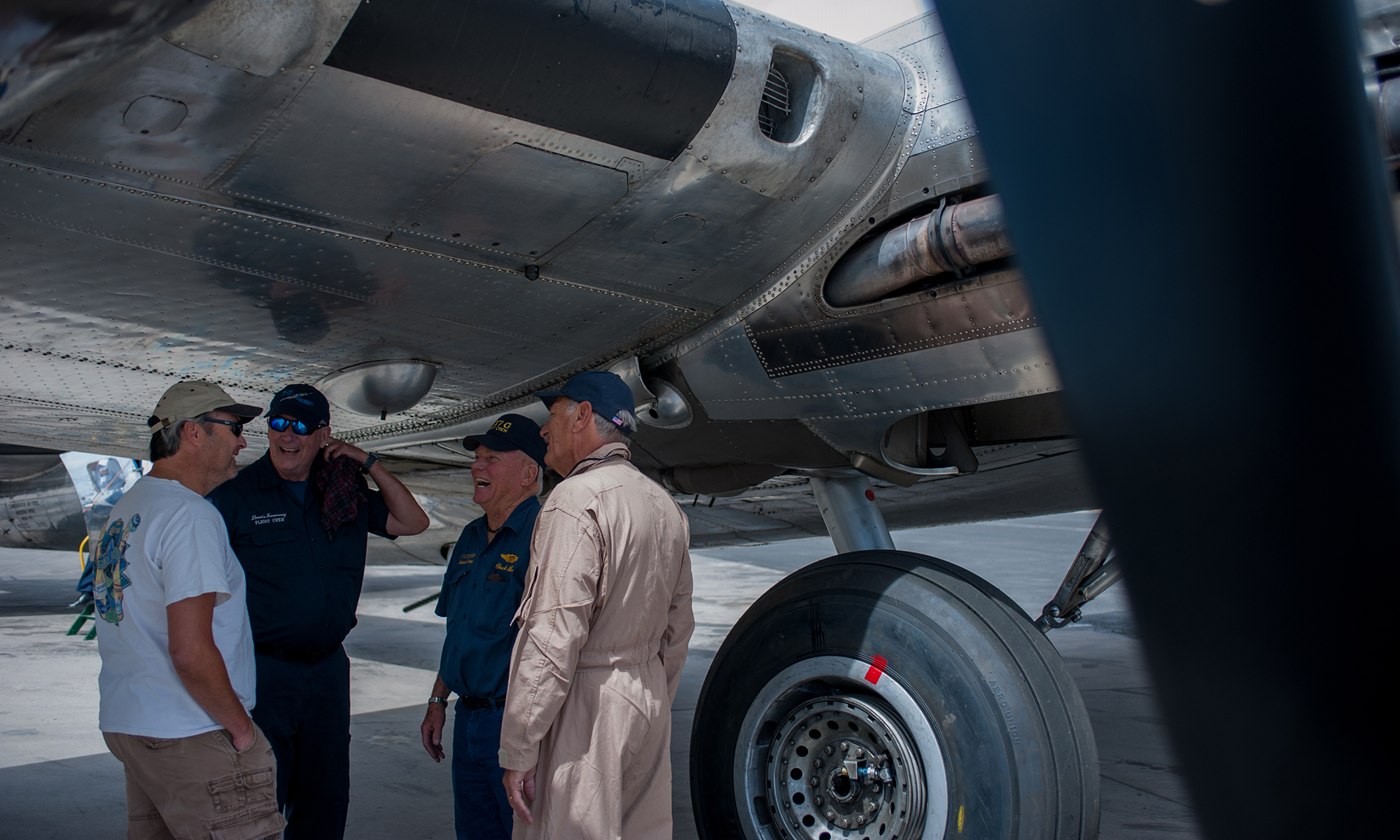
Saluting history: WWII museum honors veterans by preserving their stories, vintage planes
By Jesse Stawnyczy/ Cronkite News |
MESA – As the Flying Fortress thunders to life on the runway, Jeff Cook runs to warn visitors to avoid the danger zone. The roar of the propellers drowns out his voice and the prop wash nearly blows off his cap.
It’s a typical day at the Arizona Commemorative Air Force Museum in Mesa, where people like Cook keep history alive through storytelling and by maintaining the airworthiness of the museum’s vintage warplanes. Passengers can tour the museum and planes or take flight on several World War II aircraft, including a twin-engine B-25 Mitchell, a Stearman trainer biplane and Sentimental Journey, one of just a handful of operational B-17G Flying Fortresses.
“That’s really our mission, to preserve one of every type of aircraft from World War II,” said Cook, who served in the Army for 27 years and now dedicates much of his time to preserving these planes and the stories of the people who flew them.
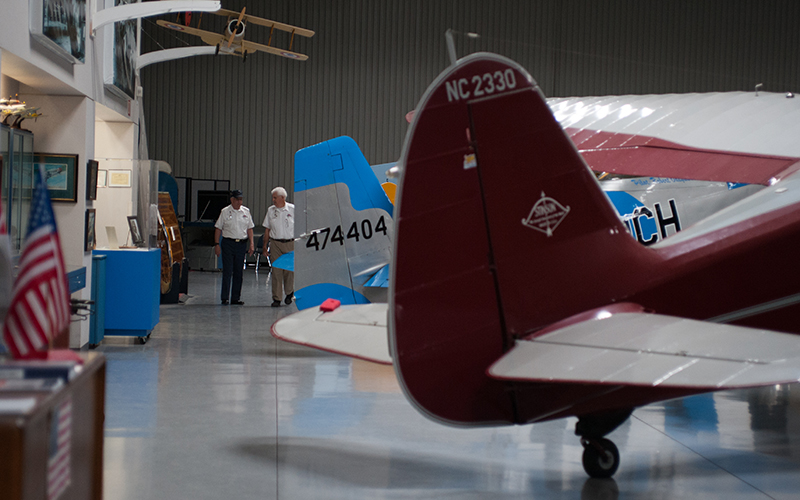
Volunteers Jeff Cook (left) and Bob Charnes were just kids during World War II. Charnes recalls rationing during the war, including on chewing gum. Merchants would only sell one stick per person, for 25 cents each. (Photo by Jesse Stawnyczy/Cronkite News)
Cook has recorded video interviews with 27 World War II veterans, sending free DVD copies to the veterans and to the Library of Congress for its Veterans Oral History Program.
It’s important to preserve the testimony of aging veterans, Cook said, because their numbers are rapidly dwindling. About 558,000 of the 16 million Americans who served in World War II were alive in 2017, and 362 die each day, according to the National WWII Museum in New Orleans, citing the U.S. Department of Veterans Affairs.
Paul Moore, another Commemorative Air Force Museum guide, said veterans who visit often tell their war stories, including some they’ve never shared with loved ones. Some veterans have trouble sharing war stories with their children because the younger people can’t relate to the experience, Moore said.
Cook interviewed Moore’s father about his experience with the “Forgotten 500,” members of B-17 crews who were shot down over Nazi-occupied Serbia in 1944. The airmen, who had been sheltered by Serbian sympathizers for months, were later airlifted to safety.
“The stories are fascinating.” Moore said, “That’s why I admire Jeff and the crew here for interviewing these guys and getting the oral history.”
Moore said he brought his father to the museum when he was 85. The two of them flew in the B-17, and his father thoroughly enjoyed sitting in the nose of the bomber. He was also given the opportunity to sign his name on the bomber’s bay doors – a honor afforded any veteran who served on or helped build a B-17. His father died last year.
Jeff Cook said he never tires of seeing the Flying Fortress take off.
“Do you think anyone could?”
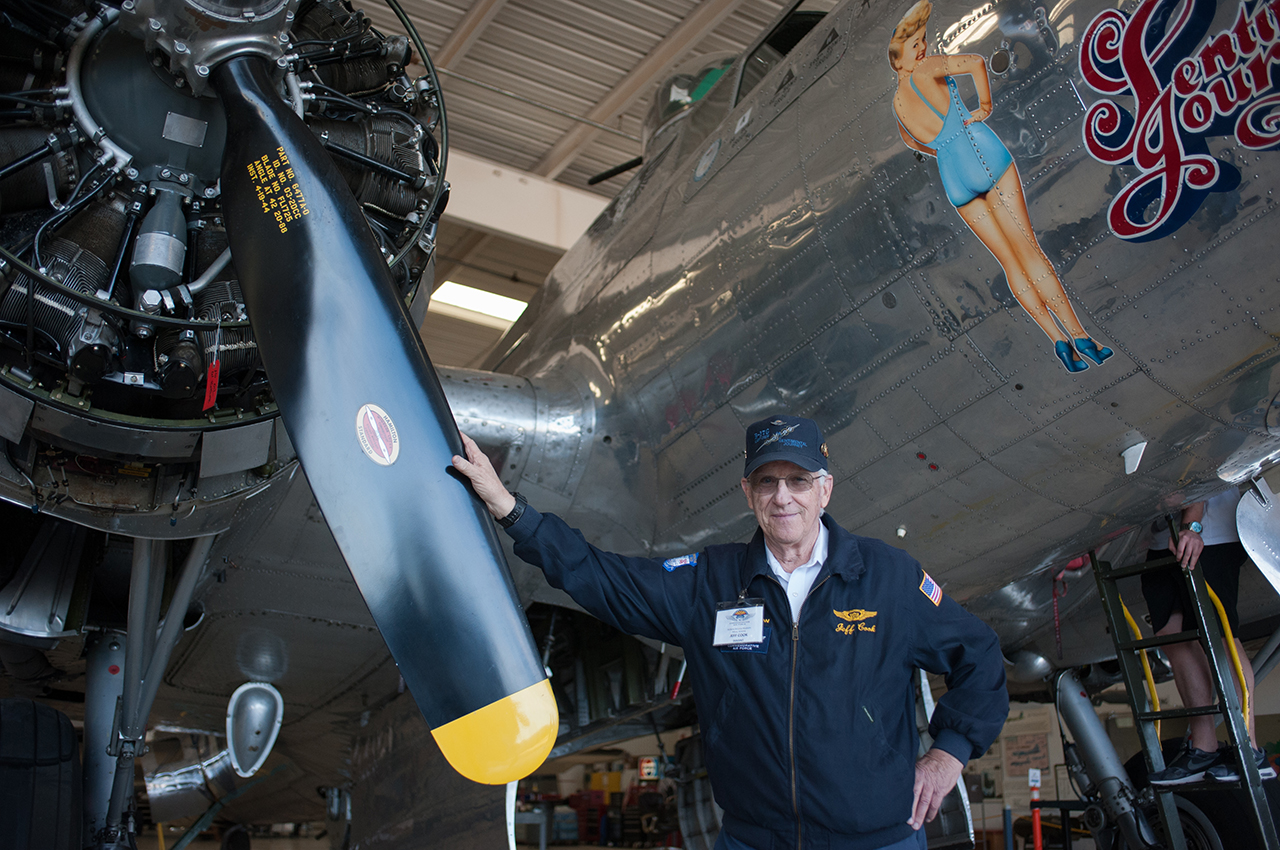
Jeff Cook (with pinup Betty Grable peering down over his shoulder) spent 27 years in the Army before volunteering at the museum. He has been working on a personal project for several months, recording video interviews with World War II veterans before their stories are lost. The interviews typically last 45 minutes, and one veteran he spoke with was more than 100 years old. (Photo by Jesse Stawnyczy/Cronkite News)

Out of nearly 13,000 B-17s produced, Cook said, fewer than a dozen still fly. The surviving planes include Sentimental Journey, a B-17G, at Falcon Field. He said maintenance can be expensive because “there aren’t that many customers who would want a B-17 engine, but there are some, and it’s profitable for those people.” (Photo by Jesse Stawnyczy/Cronkite News)
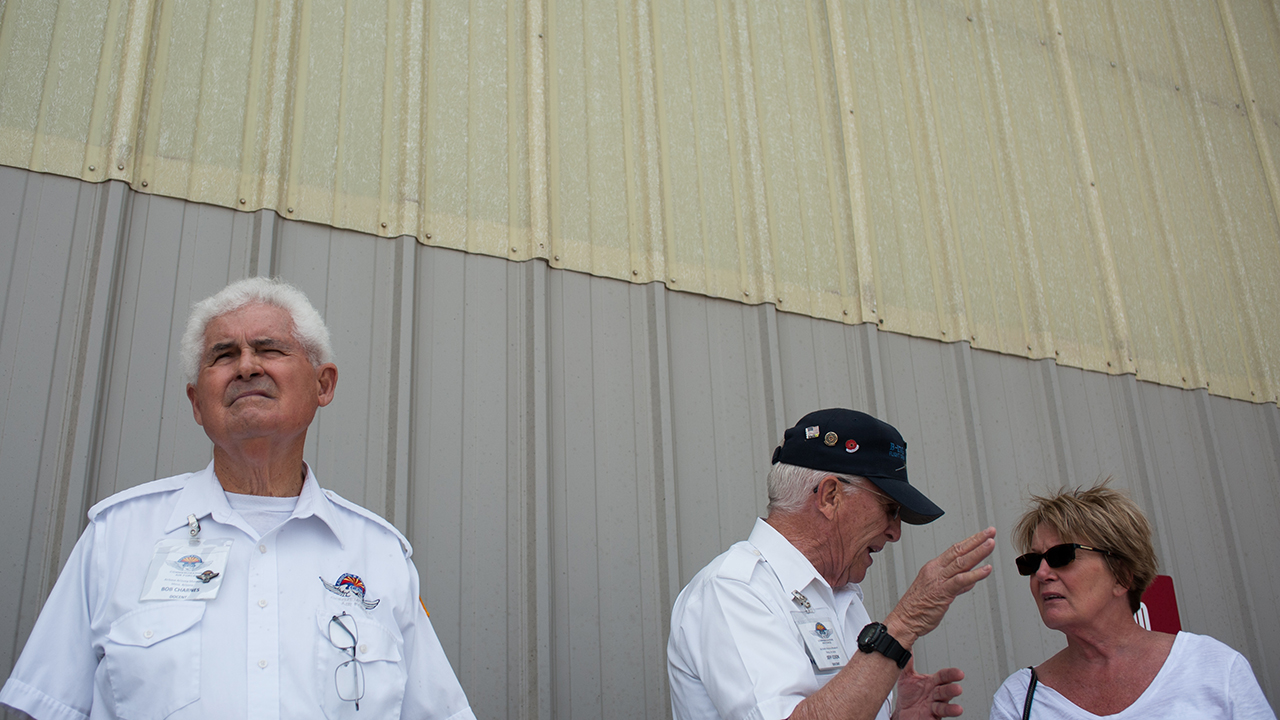
Sherry Forrest, who was visiting from Iowa, said of Cook (right), “He’s very knowledgeable, he taught me a lot,” especially about the Doolittle Raid in April 1942. (Photo by Jesse Stawnyczy/Cronkite News)
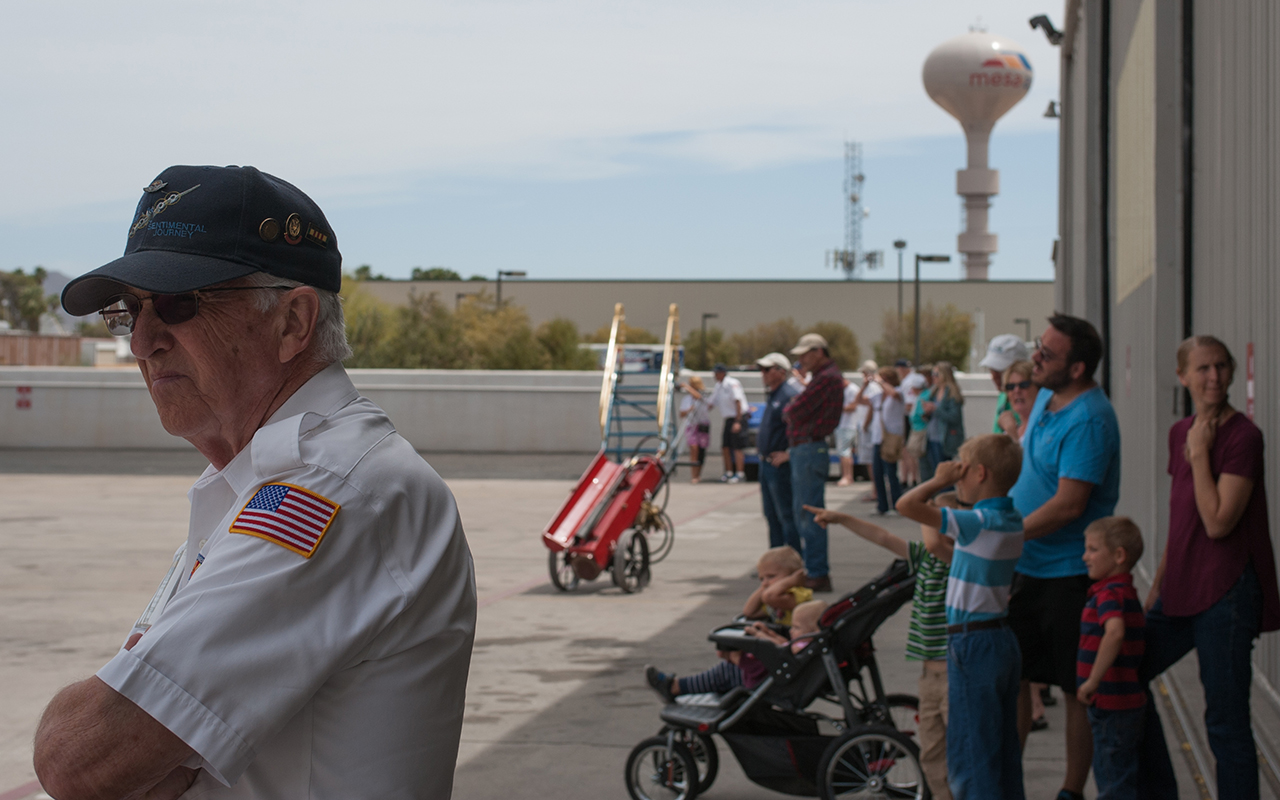
Cook keeps a close watch as a crowd gathers outside the museum hangar, drawn to the unmistakable sound of four B-17 piston engines roaring to life on the runway. Visitors can pay for flying tours on one of several aircraft at the museum, including the B-17G Sentimental Journey. (Photo by Jesse Stawnyczy/Cronkite News)

Cook said he never tires of seeing Sentimental Journey take off and fly over Falcon Field. “Do you think anyone could?” (Photo by Jesse Stawnyczy/Cronkite News)
Follow us on Instagram.

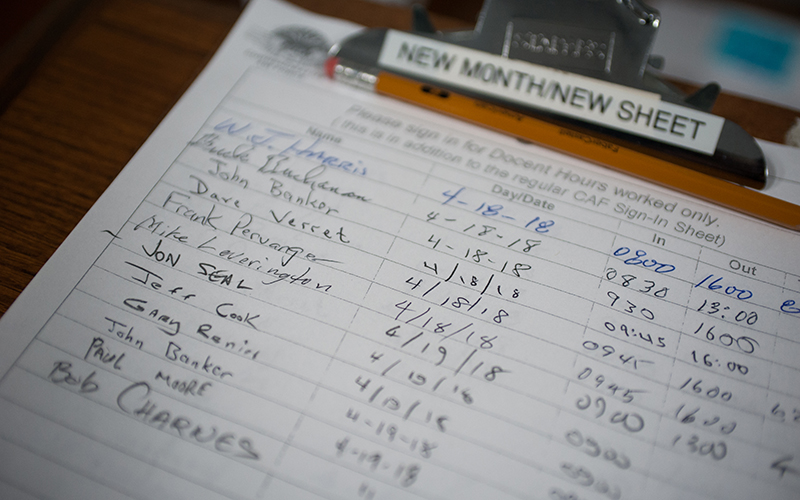
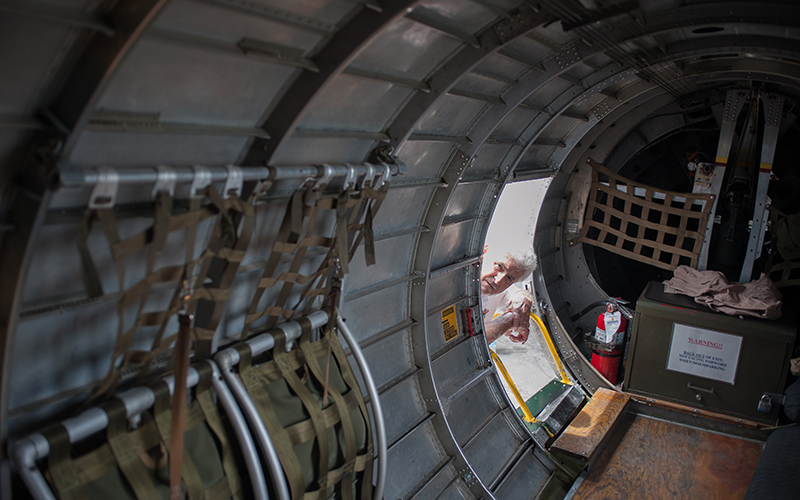
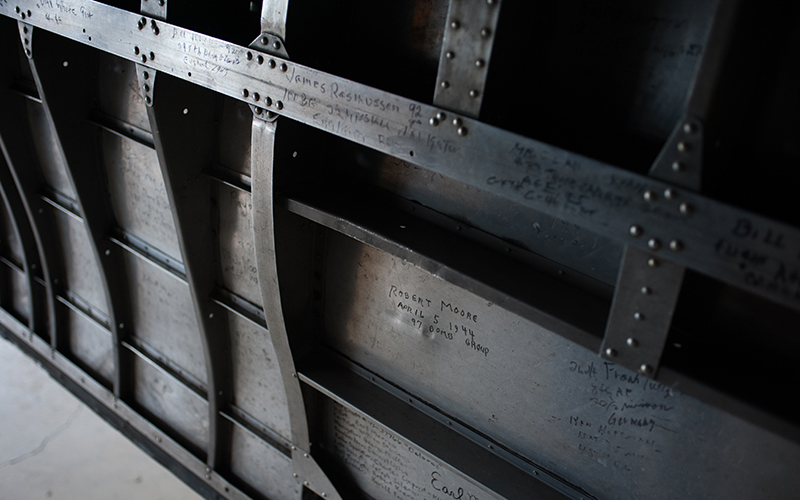

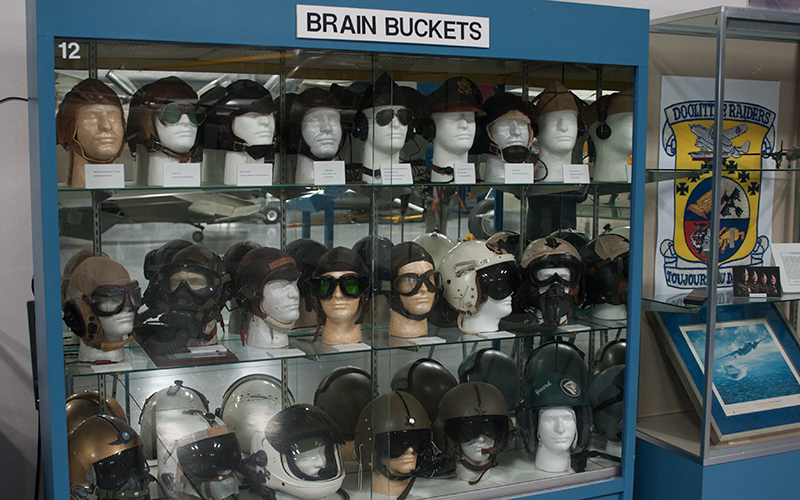

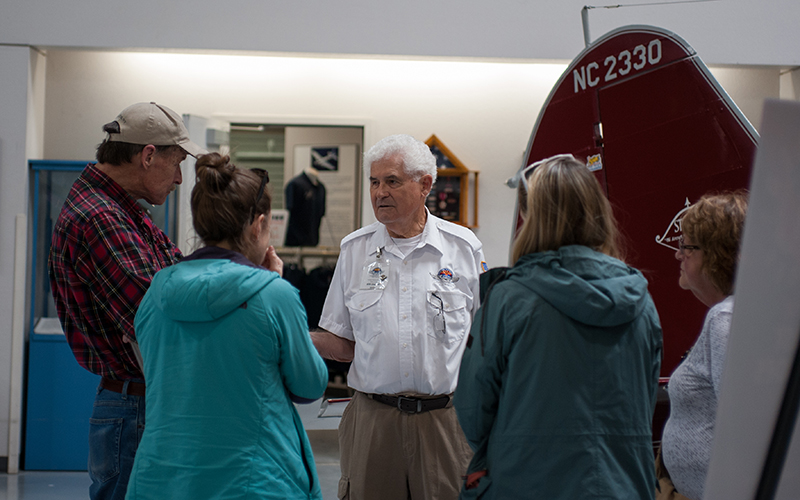
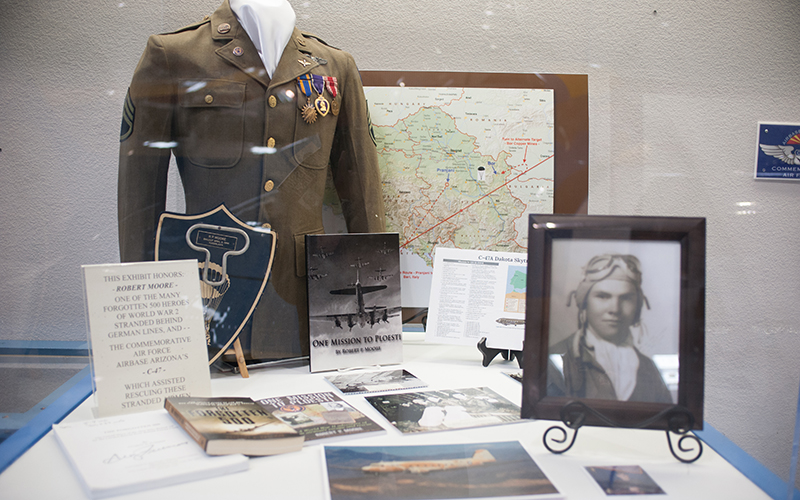
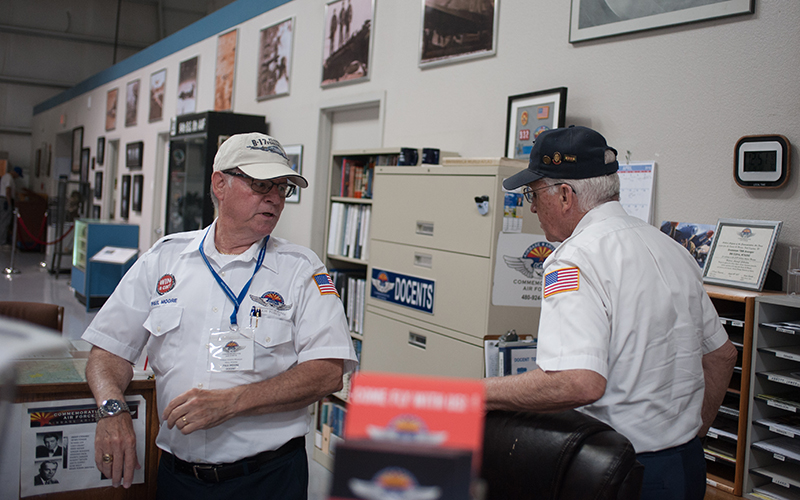
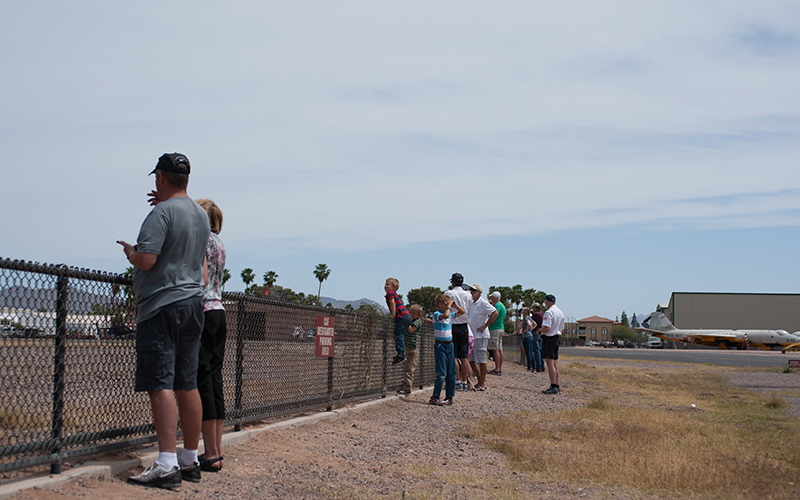
Leave a Comment
[fbcomments]